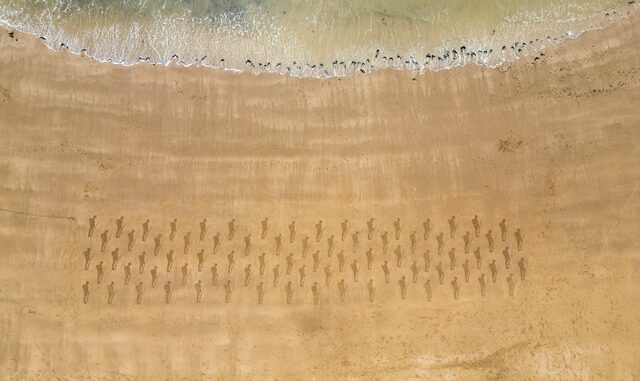
As early morning waves from the incoming tide gently washed over 80 Tommy silhouettes engraved in the sand at Stone Bay today (May 22), the sea removing all traces of their short existence, standing above the beach, three people watched, each lost in silent reverie as they thought of family members.
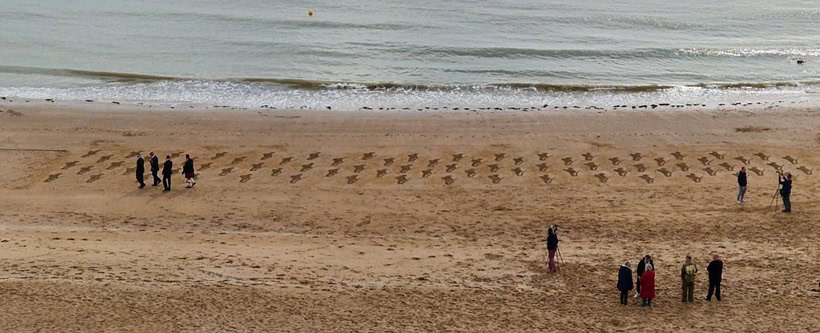
The sand installation of 80 Tommies was created by Royal British Legion Industries (RBLI) to commemorate the upcoming 80th Anniversary of D-Day (on June 6). It was fashioned as a tribute to the troops who took part in the D-Day Landings, each silhouette a silent reminder of the sacrifice made 80 years ago by so many.
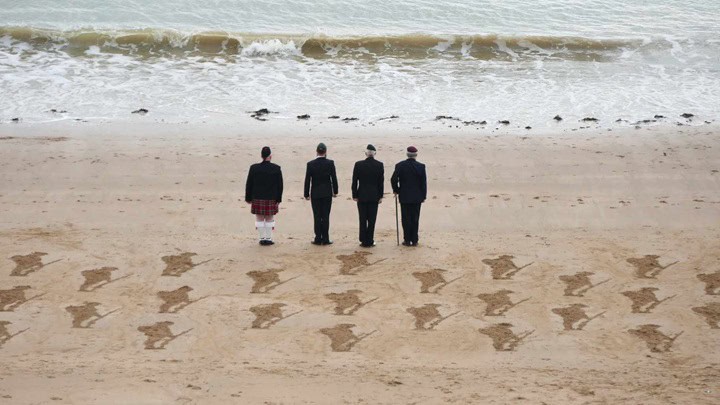
Pete Gower, a 72-year-old veteran, looked down from a vantage point, and thought of his father Arthur, who on D-Day, fought with the Sussex Regiment on Normandy’s bloody beaches. Before Pete set out that morning, he placed a treasured memento in his pocket – his father’s berthing card for the landing craft. Just as his father had put it in his pocket 80 years ago as he set sail from England to Normandy, so too did Pete.
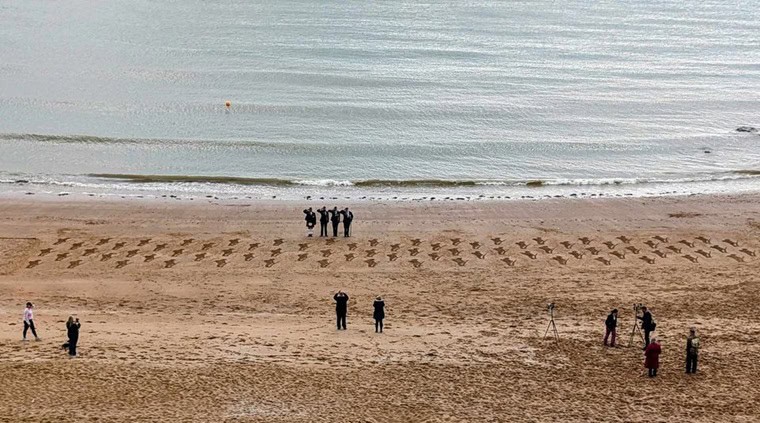
Pete Gower, a resident at RBLI’s veterans’ village in Aylesford, Kent, said, “Watching as the Tommies were washed away and listening to the Pipers, in my mind’s eye I could see the barbed wire scars my father had on his body that he got on 6 June 1944. As a boy, I kept asking him to tell me how he got them and what he did in the war. For years he wouldn’t, but one day he said, ‘You’re in the Army now, I’ll tell you’.
“I’ll never forget his words as he told me about D-Day and how he acted as a human bridge for his mates. He said, ‘All you had to do was get on that beach and get off it to cover as quick as possible; it didn’t last that long, but it seemed like a lifetime. The guys couldn’t get over the barbed wire; they were just dropping as they were shot. All I did was throw myself across the barbed wire and they ran over me, but you could feel as bullets hit some of them’.”
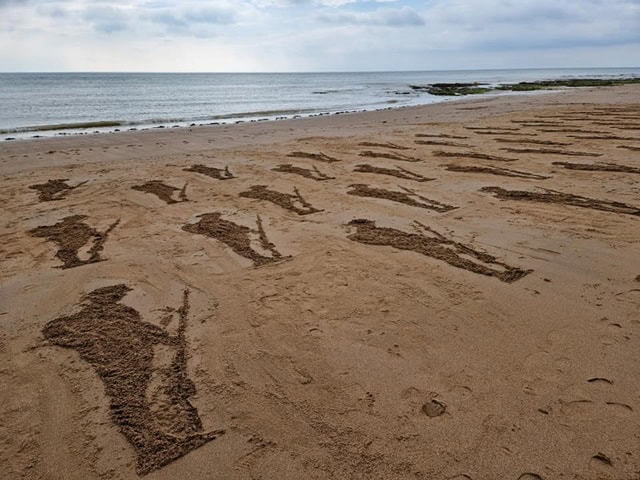
Looking down at the 80 Tommy silhouettes, Pat Fawcett, a resident at RBLI’s village recalled the morning of 6 June 1944 as though it was yesterday: “I was only 12 of the time and all I remember about the D-Day Landings is hearing it announced on the wireless.
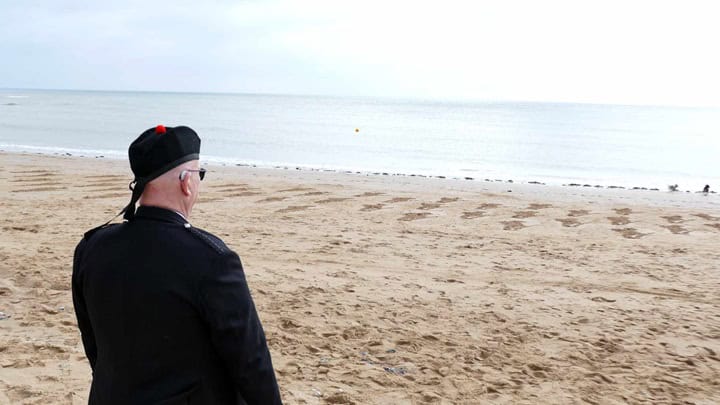
“Mum always made me and my sister Janet shoosh when the news was on. When the news reader spoke of the Normandy Landings, I remember her being very excited, and I asked, ‘What does it mean?’, and she said, ‘Well, it means the war is not going to end soon, but maybe after we get to Germany’. As a child the news really wasn’t all that interesting, but I remember saying to my mum, ‘Does that mean daddy’s coming home?’ And she said no. I was only 12 at the time, but I’m so clear about D-Day, as I’ve told that story so many times.”
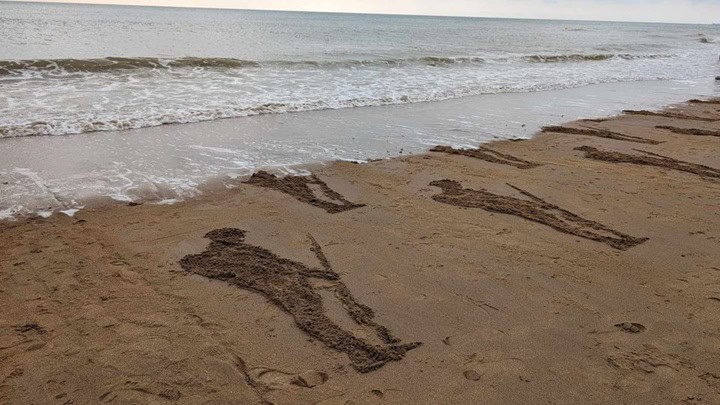
As the waves gently washed over the Tommies Darren Riley a veteran who served in the Light Infantry read On This Day, a poem he had crafted as his tribute, drawing on his experience of active service in Bosnia.
As Brenda Symes watched she thought of her older brother Eddie, who served in North Africa and France with the Royal Signals.
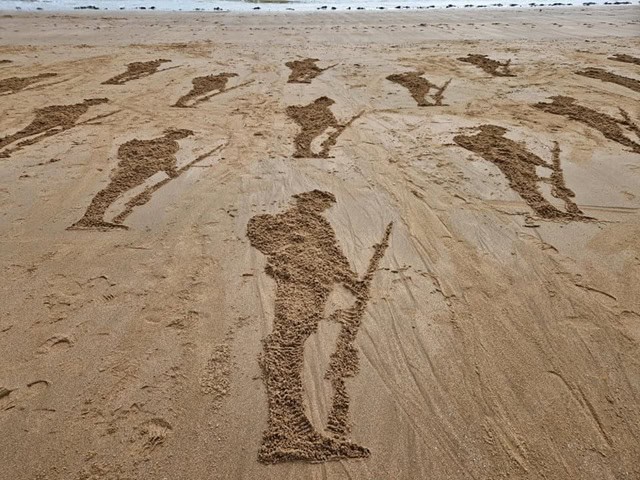
Lisa Farmer, Chief Executive of RBLI, said: “As we commemorate the 80th anniversary of the D-Day Landings, our sand installation of 80 Tommy silhouettes serves as a powerful reminder of the courage displayed by those who fought for our freedom.
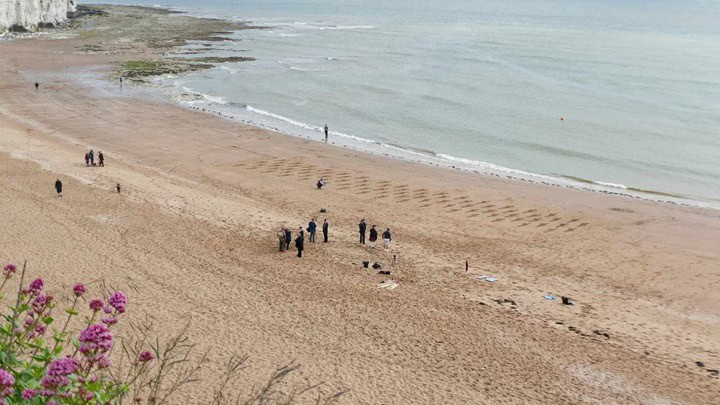
“It stands as a testament to the resilience of the human spirit in the face of adversity, and the enduring legacy of those we owe so much to as they served in the Royal Navy, Army, Royal Air Force.”
The installations were the first activity for the RBLI’s commemorative D-Day programme running up to 6th June. Find out about RBLI at: https://rbli.co.uk/
What is D Day
D-Day was the day during the Second World War when the Battle of Normandy began.
Launched on June 6, 1944 Operation Overlord (codenamed Operation Neptune and commonly known as D-Day). It was the largest seaborne invasion in history.
The landing of 24,000 British, US and Canadian troops began the liberation of German-occupied France from Nazi control and laid the foundations of the Allied victory on the Western Front.
The weather on D-Day was far from ideal and the operation had to be delayed 24 hours; a further postponement would have meant a delay of at least two weeks as the invasion planners had requirements for the phase of the moon, the tides, and the time of day that meant only a few days each month were deemed suitable. Adolf Hitler placed German Field Marshal Erwin Rommel in command of German forces and of developing fortifications along the Atlantic Wall in anticipation of an Allied invasion.
The amphibious landings were preceded by extensive aerial and naval bombardment and an airborne assault—the landing of 24,000 US, British, and Canadian airborne troops shortly after midnight. Allied infantry and armoured divisions began landing on the coast of France at 6:30am. The target 50-mile (80 km) stretch of the Normandy coast was divided into five sectors: Utah, Omaha, Gold, Juno, and Sword. Strong winds blew the landing craft east of their intended positions, particularly at Utah and Omaha.
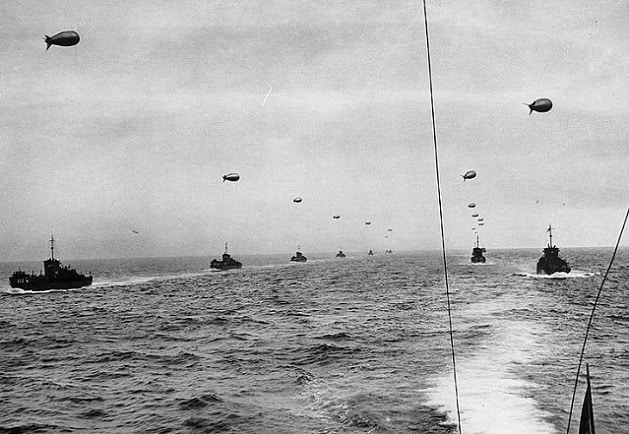
The men landed under heavy fire from gun emplacements overlooking the beaches, and the shore was mined and covered with obstacles such as wooden stakes, metal tripods, and barbed wire, making the work of the beach-clearing teams difficult and dangerous. Casualties were heaviest at Omaha, with its high cliffs. At Gold, Juno, and Sword, several fortified towns were cleared in house-to-house fighting, and two major gun emplacements at Gold were disabled, using specialised tanks.
The Allies failed to achieve any of their goals on the first day. Carentan, St. Lô, and Bayeux remained in German hands, and Caen, a major objective, was not captured until July 21. Only two of the beaches (Juno and Gold) were linked on the first day, and all five beachheads were not connected until June 12; however, the operation gained a foothold which the Allies gradually expanded over the coming months.
The Battle of Normandy was fought through June, July and August 1944. By late August 1944, all of northern France had been liberated, and by the following spring the Allies had defeated the Germans. The Normandy landings have been called the beginning of the end of war in Europe.
German casualties on D-Day have been estimated at 4,000 to 9,000 men. Allied casualties were at least 10,000, with 4,414 confirmed dead.

